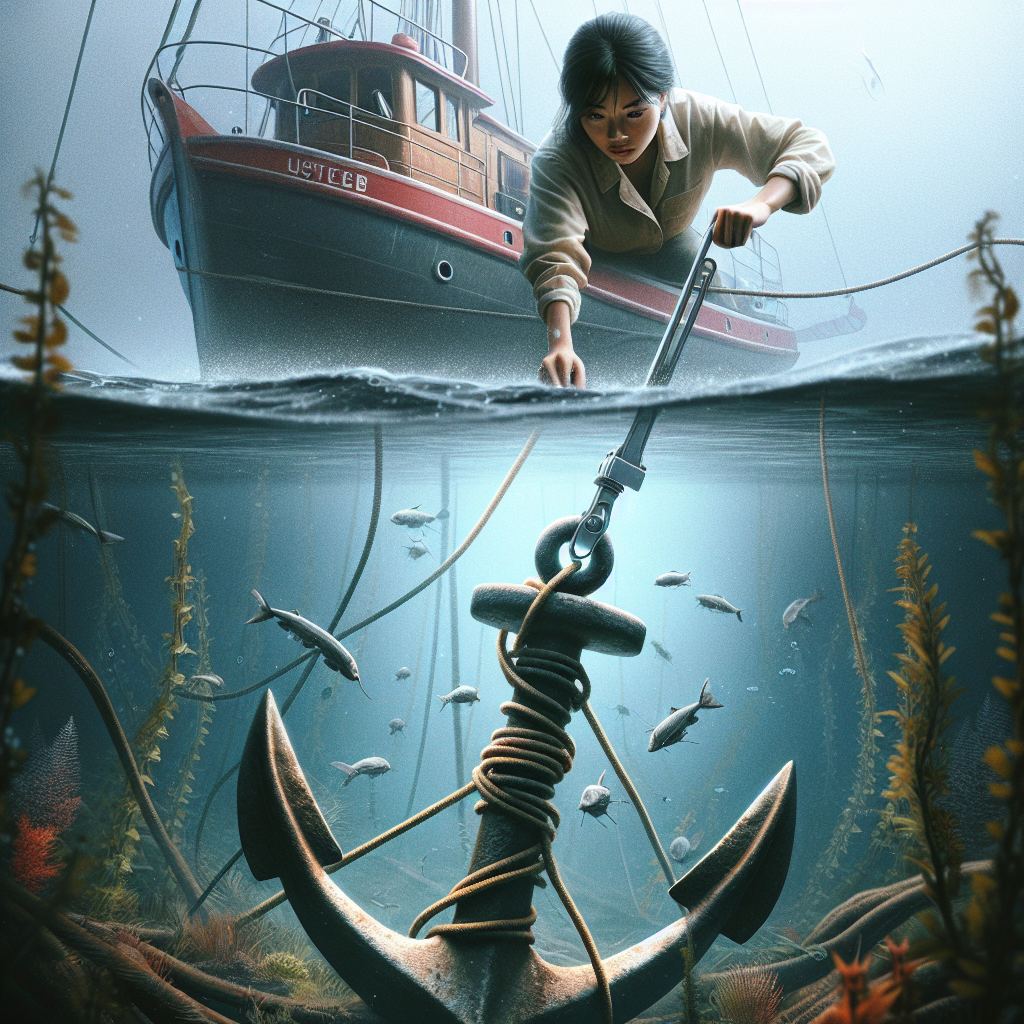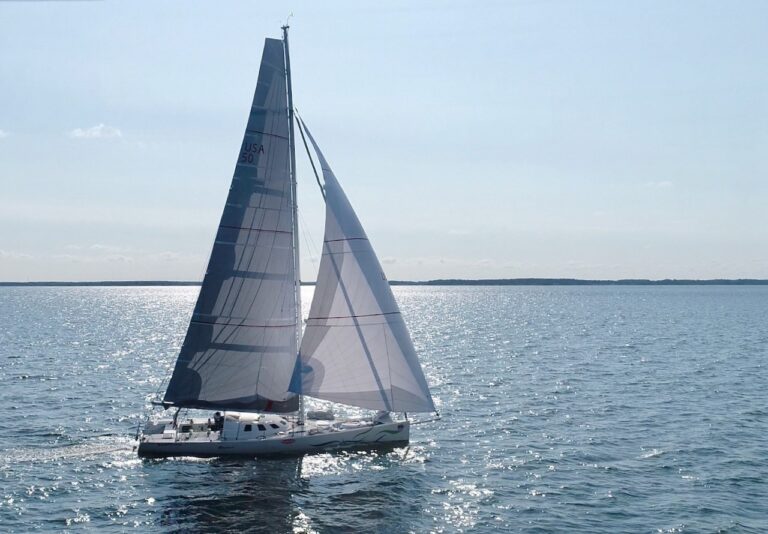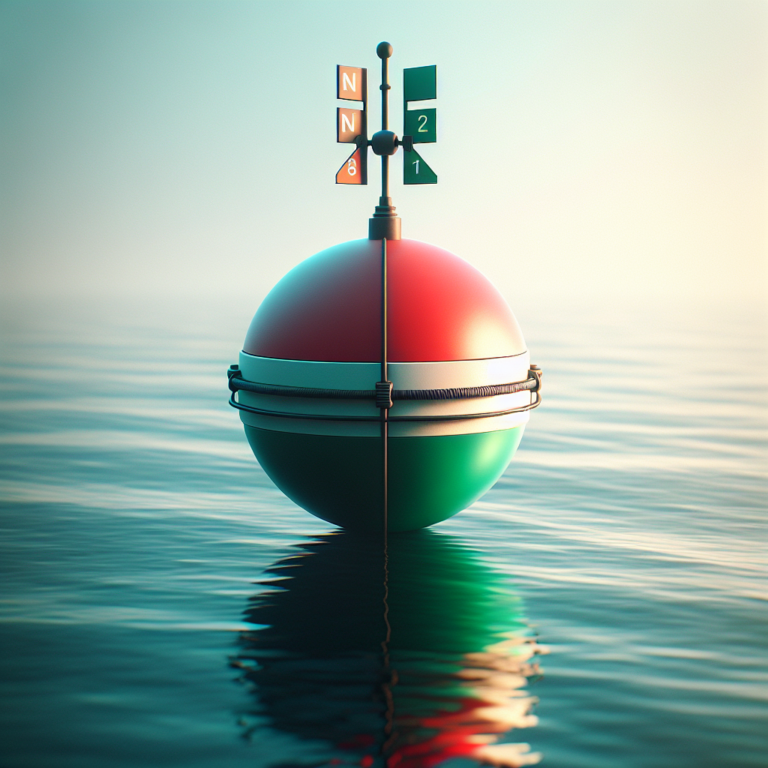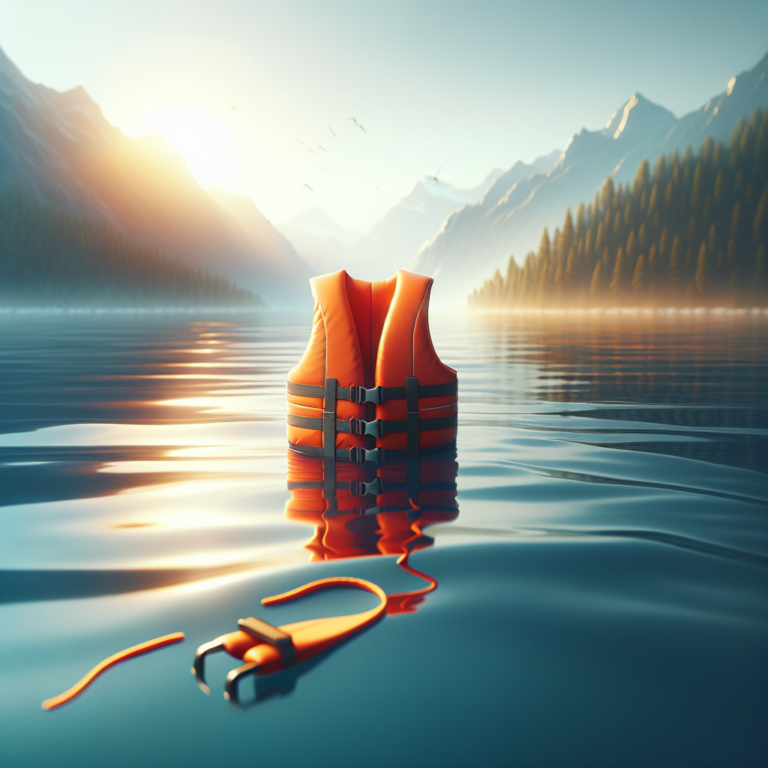What Is The Best Way To Retrieve An Anchor
So you’re out on the water, enjoying a day of boating, when it’s time to pack up and head home. But there’s one problem: you’ve dropped anchor in the deep blue sea, and getting it back up seems like a daunting task.
You start to wonder, what is the best way to retrieve an anchor? In this article, we’ll explore some tried and true methods that will have you pulling up that anchor with ease, ensuring a smooth end to your boating adventure.

Understanding the Anchor Retrieval Process
Knowing the Basics of Anchor Retrieval
When it comes to boating, anchor retrieval is an essential skill that every sailor must possess. Whether you’re anchoring for a quick swim or staying overnight, knowing how to retrieve your anchor properly is crucial for a safe and hassle-free experience on the water.
The process of anchor retrieval involves various steps, equipment, and techniques that ensure a smooth operation. By understanding the basics of anchor retrieval, you can navigate through any challenges that may arise and ensure a successful retrieval every time.
Safety Precautions During Anchor Retrieval
Safety should always be the top priority when engaging in any boating activity, and anchor retrieval is no exception. It is important to take certain safety precautions during the anchor retrieval process to minimize potential risks and ensure the well-being of everyone on board.
Some basic safety measures to keep in mind include wearing personal flotation devices (PFDs), maintaining a clear and organized deck, and always being aware of your surroundings.
Additionally, it is crucial to communicate with your crew members and establish clear roles and responsibilities to avoid confusion or accidents during the retrieval process.
The Equipment Needed for Anchor Retrieval
Before diving into the anchor retrieval process, it is important to have the necessary equipment on board to ensure a smooth and efficient operation. The equipment required may vary depending on the type and size of your boat, as well as the type of anchor and rode you are using.
Some essential equipment for anchor retrieval includes a sturdy anchor windlass or capstan, a proper anchor rode (such as chain, nylon rope, or a combination), and appropriate anchor retrieval systems (such as anchor balls or lifts).
It is important to invest in high-quality equipment and regularly maintain and inspect them to ensure their effectiveness and longevity.
Types of Anchors
Fluke Anchors
Fluke anchors, also known as Danforth anchors, are one of the most popular types of anchors used by boaters around the world. They are designed with sharp, pointed flukes that dig into the seabed for a secure hold.
Fluke anchors excel in sandy or muddy bottoms and are relatively lightweight, making them easy to handle and store. They are commonly used in smaller boats or for temporary anchoring situations.
Plow Anchors
Plow anchors, as the name suggests, resemble the shape of a plow or plough. They feature a sharp point with a curved fluke, which helps them penetrate various seabeds, including sand, clay, or grass.
Plow anchors provide a strong grip and are known for their reliable holding power, making them suitable for larger vessels or in areas with unpredictable weather conditions.
Mushroom Anchors
Mushroom anchors are designed with a wide, flat bottom and a weighted top, resembling a mushroom shape. These anchors work by using their weight and suction rather than penetration.
Mushroom anchors are commonly used in soft bottoms such as mud or silt, where they can provide a secure hold. However, they may not be as effective in rocky or uneven seabeds.
Bruce or Claw Anchors
Bruce or claw anchors are designed with a claw-like shape and curved flukes, allowing them to dig deep into the seabed and provide excellent holding power. These anchors excel in a variety of seabeds, including sand, mud, or grass. Bruce or claw anchors are widely used on different types of boats due to their versatility and reliability.
Types of Anchor Rode
Chain Rode
Chain rode refers to the use of a chain as the primary component of the anchor rode. Chains are commonly used in conjunction with ropes to provide additional weight and durability. Chain rodes offer several advantages, including increased strength, abrasion resistance, and reduced risk of fouling or tangling with debris on the seabed.
However, it is important to consider the weight of the chain, as it can add significant load to the boat’s anchor system.
Nylon Rope Rode
Nylon rope rode, also known as anchor line, is another popular choice for anchoring. Nylon ropes offer excellent shock absorption and flexibility, allowing them to withstand the constant pulling and tugging experienced during anchor retrieval.
They are generally lighter than chain rodes, making them easier to handle and store. However, nylon ropes may be more prone to abrasion and degradation over time, requiring regular inspection and replacement.
Combination Ropes
Combination ropes, as the name implies, combine the benefits of both chain and rope rodes. These rodes typically consist of a section of chain followed by a length of nylon rope.
The chain provides weight and durability, while the rope offers flexibility and shock absorption. Combination rodes are often preferred by boaters who want a balanced solution that combines the advantages of both chain and rope.
Pre-Anchor Retrieval Steps
Assess The Sea Conditions
Before attempting to retrieve your anchor, it is crucial to assess the sea conditions and evaluate any potential challenges or hazards. Factors to consider include wave height, current strength, wind speed, and the type of seabed.
Understanding the sea conditions can help you determine the appropriate techniques and equipment required for a successful retrieval.
Preparation of the Boat
Preparing your boat for anchor retrieval involves securing loose items, stowing any gear, and ensuring a clear pathway on deck to avoid tripping hazards.
It is important to inspect your boat’s mechanical systems, such as the anchor windlass or capstan, to ensure they are in good working condition. Having a well-organized and clutter-free deck will contribute to a safer and more efficient retrieval process.
Preparation of Equipment
Inspecting and preparing your retrieval equipment is another crucial step before retrieving your anchor. check the condition of your anchor rode, ensuring there are no signs of wear, fraying, or damage. Make sure the anchor retrieval systems, such as anchor balls or lifts, are functioning properly and securely attached to the anchor rode.
Additionally, ensure that any necessary tools or additional equipment, such as gloves or a snubber, are readily accessible for use during the retrieval process.

The Anchor Pulling Technique
Pulling the Boat Towards the Anchor
One common technique for anchor retrieval is pulling the boat towards the anchor. This method involves using the engine’s forward gear to gradually move the boat in the direction of the anchor. As the boat moves forward, the anchor rode becomes taut, and the anchor is eventually dislodged from the seabed.
It is important to maintain steady and controlled movement, avoiding excessive speed or abrupt maneuvers that could strain the boat’s anchor system.
Using Motor Power to Pull
In situations where the boat is unable to pull the anchor solely by moving towards it, utilizing the motor power to pull the anchor can be an effective approach. This technique involves engaging the boat’s engine in reverse gear while maintaining tension on the anchor rode.
The force generated by the engine in reverse helps to break the anchor free from the seabed. However, caution must be exercised to avoid excessive strain on the boat’s hull or anchor system.
Release the Rope Tension and Lift
Once the anchor has been dislodged from the seabed, it is important to release the rope tension gradually. This can be done by reducing engine power or moving the boat into neutral gear.
As the rope tension decreases, the boat can be maneuvered closer to the anchor, allowing for easier retrieval. Once the anchor is within reach, it can be lifted carefully onto the deck using appropriate lifting techniques and equipment.
Using an Anchor Retrieval System
Types of Anchor Retrieval Systems
anchor retrieval systems are designed to make the process of retrieving an anchor easier and more efficient. Two common types of anchor retrieval systems are anchor balls and anchor lifts. Anchor balls are buoys attached to a line that is secured to the anchor rode.
By pulling on the line, the buoy floats to the surface, indicating the position of the anchor and making it easier to retrieve. Anchor lifts, on the other hand, are mechanical devices that are typically attached to the bow of the boat. They provide the leverage and mechanical advantage to lift the anchor easily and smoothly.
How to Use an Anchor Ball
Using an anchor ball involves attaching the buoy to the anchor rode using a line or snap hook. Before lowering the anchor, the buoy is secured to the boat, ensuring it remains easily visible.
When it’s time to retrieve the anchor, simply pull on the line or snap hook, causing the buoy to ascend to the surface. This allows you to locate the anchor’s position and use the rope tension technique to retrieve it safely and efficiently.
How to Use an Anchor Lift
An anchor lift is a mechanical device designed to assist with the lifting of heavy anchors. An anchor lift, it is typically secured to the bow of the boat and connected to the anchor rode.
By operating the lift’s handle or mechanism, the anchor can be lifted out of the water without exerting excessive physical effort. Anchor lifts are particularly useful for larger boats or when retrieving anchors with substantial weight.
Troubleshooting Anchor Retrieval Issues
When the Anchor is Stuck
Sometimes, retrieving an anchor can become challenging when it is stuck in the seabed. When this happens, it is important to remain calm and avoid panicking. First, attempt to release the anchor by changing the boat’s position and adjusting the angle of the anchor rode.
By gently rocking the boat or moving it from side to side, you may be able to dislodge the anchor. If these techniques prove unsuccessful, you may need to seek assistance from nearby boaters or utilize more advanced retrieval techniques, such as using a trip line or remote operated vehicles (ROVs).
When the Anchor Line is Tangled
Tangled anchor lines can be frustrating and time-consuming to untangle. Preventing tangles in the first place is best achieved by properly stowing your anchor line and avoiding any entanglements with other equipment or debris on the boat.
In the event of a tangled anchor line, it is important to approach the situation with patience. Carefully assess the tangle and try to unravel it slowly and systematically. If needed, enlist the help of additional crew members or utilize tools, such as boat hooks or knives, to carefully separate the tangled sections.
Overcoming Bad Weather Conditions
Retrieving an anchor in unfavorable weather conditions can introduce additional challenges. High winds, strong currents, or choppy waters can make the retrieval process more difficult and potentially dangerous.
In such situations, it is important to prioritize safety and make a judgment call on whether to attempt retrieval or wait until conditions improve.
If you find yourself in adverse weather, consider seeking sheltered areas, employing additional anchoring techniques (such as using two anchors for added stability), or contacting local authorities for assistance.
Maintaining Your Anchor and Retrieval Equipment
Regular Inspection of Anchor
Regularly inspecting your anchor is essential to ensure its integrity and effectiveness. Check for signs of wear, such as bent flukes, cracked welds, or rust. If any damage is detected, address it promptly by repairing or replacing the anchor.
Additionally, inspect the anchor’s connection points, such as the shackle or swivel, to ensure they are secure and in good condition. Performing routine maintenance and cleaning will help extend the lifespan of your anchor and keep it in optimal working condition.
Cleaning and Storing of Anchor
Cleaning your anchor after each use is important to remove any debris, mud, or salt buildup that may affect its performance. Rinse the anchor thoroughly with fresh water and, if necessary, use a soft brush or sponge to remove stubborn dirt.
Once clean, ensure the anchor is completely dry before storing it in a dry and well-ventilated area to prevent corrosion. Proper storage will help maintain the anchor’s structural integrity and prevent any damage or deterioration.
Maintaining Your Retrieval System Equipment
In addition to the anchor, it is important to regularly inspect and maintain your retrieval system equipment. Check the condition of anchor balls, anchor lifts, or any other specialized retrieval systems you may use.
Ensure that all mechanical parts are working smoothly and that there are no signs of wear or damage. Lubricate moving parts as necessary and follow the manufacturer’s guidelines for maintenance. By properly maintaining your retrieval system equipment, you can rely on them when it comes time to retrieve your anchor.
Importance of Anchor Retrieval Skills
Safety Concerns of Anchor Retrieval
Having proficient anchor retrieval skills is crucial for the safety of yourself, your crew, and your boat. Proper retrieval techniques minimize the risk of accidents, such as entanglements, falls, or injuries caused by malfunctioning equipment.
By prioritizing safety throughout the retrieval process and being knowledgeable about potential hazards, you can ensure a secure and smooth operation.
Importance in Diverse Sea Conditions
Seas and weather conditions can vary greatly, posing different challenges during anchor retrieval. Understanding anchor retrieval techniques and having the necessary skills allow you to adapt to different conditions efficiently and effectively.
Being able to retrieve your anchor properly in diverse sea conditions ensures that you can enjoy your time on the water without unnecessary complications or stress.
Enhancing the Longevity of Your Equipment
Proper anchor retrieval techniques not only contribute to safe and successful retrieval but also help enhance the longevity of your equipment. By using the correct techniques and regularly maintaining your anchor and retrieval system, you can minimize wear and tear, prevent damage, and extend the lifespan of your equipment.
This ultimately saves you time and money by reducing the need for frequent replacements or repairs.
Advanced Anchor Retrieval Techniques
Using Two Anchors for Retrieval
Using two anchors for retrieval is a technique often employed when additional holding power is required or when anchoring in areas with strong currents or high winds.
By setting a second anchor in the opposite direction, you can create a balanced pull, making retrieval easier and reducing the strain on a single anchor. This technique requires careful positioning and coordination to ensure the anchors do not become tangled during retrieval.
Using a Trip Line for Stuck Anchors
When an anchor becomes stuck or deeply buried in the seabed, using a trip line can help facilitate retrieval. A trip line is a separate line attached to the crown of the anchor, allowing you to apply a secondary force to dislodge the anchor.
By applying tension to the trip line while simultaneously pulling on the anchor rode, you can create back-and-forth motions that may help release the anchor.
Use of Remote Operated Vehicles (ROVs)
In certain situations, such as when the anchor is deeply embedded or located in challenging underwater terrain, utilizing remote-operated vehicles (ROVs) can be a valuable tool for anchor retrieval. ROVs are unmanned underwater vehicles equipped with cameras and mechanical arms, allowing them to perform intricate tasks underwater.
By deploying an ROV, you can visually assess the anchor’s position and use the mechanical arm to dislodge or free the anchor from its location.
In conclusion, understanding the anchor retrieval process and possessing the necessary skills, equipment, and techniques is vital for any boater. By knowing the basics of anchor retrieval, taking safety precautions, and being familiar with the different types of anchors and anchor rodes, you can confidently navigate through various sea conditions and challenges.
Additionally, utilizing advanced retrieval techniques and properly maintaining your anchor and retrieval equipment will enhance the safety, longevity, and effectiveness of your boating experience. So, next time you drop anchor, remember to retrieve it with skill and confidence, ensuring a smooth and enjoyable time on the water.








